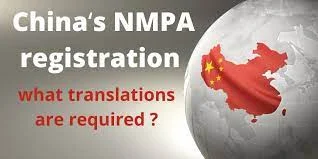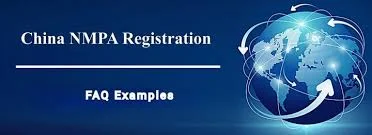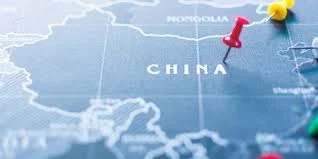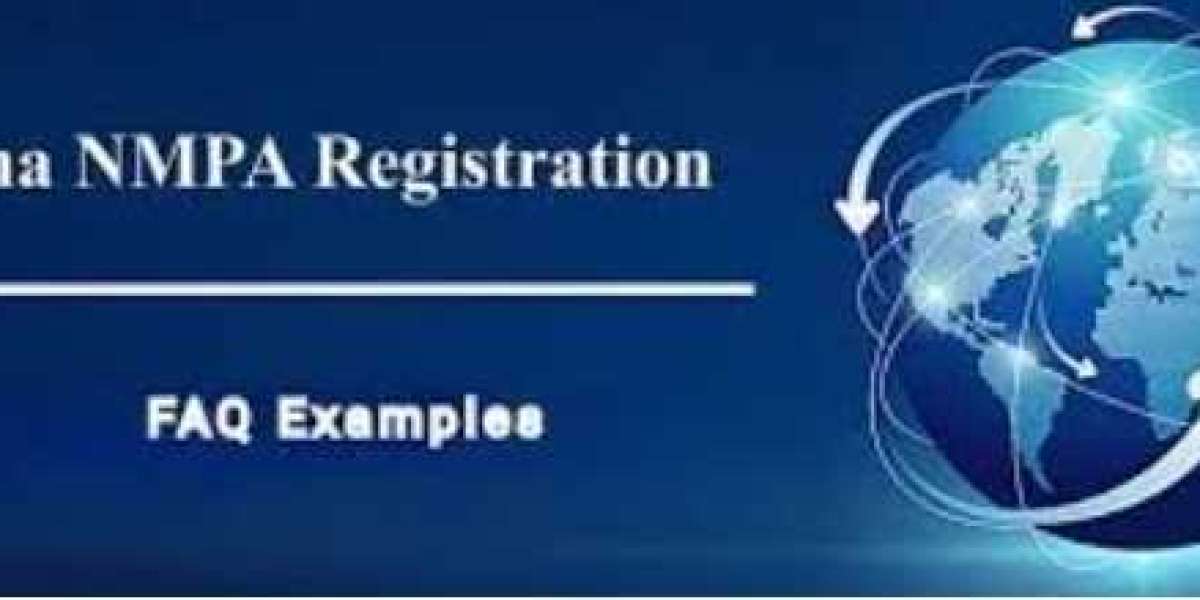Welcome to our comprehensive guide on the intricacies of the Chinese NMPA registration process! If you're a medical device company looking to tap into one of the world's largest healthcare markets, then understanding and successfully navigating this regulatory journey is absolutely crucial.
China has rapidly emerged as a global powerhouse in the medical device industry, but with great opportunities come great responsibilities. The National Medical Products Administration (NMPA) plays a critical role in ensuring that medical devices entering China are safe, effective, and meet stringent quality standards.
In this blog post, we will take you through every step of the NMPA registration process - from understanding the regulatory bodies involved to preparing your application and meeting post-registration requirements. So fasten your seatbelts as we embark on an informative adventure that will empower your company to confidently navigate China's thriving market!

Understanding the Regulatory Bodies and Requirements
When it comes to navigating the Chinese NMPA registration process for medical devices, one of the most important factors is understanding the regulatory bodies involved and their specific requirements. This knowledge will empower you to meet all necessary standards and increase your chances of a successful registration application.
The main regulatory body responsible for overseeing medical device registrations in China is the National Medical Products Administration (NMPA), formerly known as CFDA. They play a crucial role in ensuring that medical devices meet safety, quality, and efficacy standards before they can be marketed or used within China.
In addition to the NMPA, there are other key organizations involved in this process. These include certification bodies such as China Quality Certification Center (CQC) or Beijing ZhongAnZheng Certification Co., Ltd., which conduct conformity assessments on behalf of NMPA.
To successfully navigate this complex landscape, you must familiarize yourself with all applicable regulations and guidelines related to your specific device category. The classification system for medical devices in China follows similar principles as those outlined by the International Medical Device Regulators Forum (IMDRF).
It's essential to stay updated on any changes or updates made by these regulatory bodies. Regularly checking their websites or subscribing to newsletters can help keep you informed about new regulations, guidance documents, or technical requirements that may impact your registration application.
Furthermore, it's advisable to engage with experienced consultants who specialize in Chinese regulatory affairs. Their expertise will prove invaluable when interpreting and applying relevant regulations to your product.
By thoroughly understanding the regulatory bodies involved and their requirements from an early stage of your product development journey through market entry in China, you'll be better prepared for a smooth registration process.
Preparing for the Registration Process
1. Familiarize Yourself with Chinese Regulations
Before diving into the registration process, it's crucial to have a solid understanding of China's medical device regulations. The National Medical Products Administration (NMPA) is responsible for overseeing this process, so make sure you are well-versed in their requirements and guidelines.
2. Conduct thorough Research
Next, conduct extensive research on your target market and competitors. Understanding the needs and preferences of Chinese consumers will help you tailor your product to meet their specific requirements.
3. Compile Required Documentation
Gather all necessary documentation for the registration application. This includes technical specifications, testing reports, manufacturing processes, labeling information, and more. It's essential to ensure that all documents are accurate and complete to avoid delays or rejection during the review process.
4. Engage Local Experts
Consider partnering with local experts who specialize in navigating the NMPA registration process. They can provide valuable insights and guidance throughout each stage of the application procedure.
5.Conduct Pre-submission Testing
To increase your chances of approval, consider conducting pre-submission testing to identify any potential issues or gaps in compliance early on. This proactive approach allows you to address these concerns before submitting your application.
6.Prepare for Challenges
Be prepared for potential challenges along the way - obtaining NMPA registration can be a complex journey with various hurdles to overcome such as language barriers or unfamiliar regulatory procedures.
7.Maintain Clear Communication Channels
Maintaining clear communication channels is vital during this preparation phase.
Make sure you have reliable translators at hand if needed while communicating with local authorities or third-party service providers involved in your registration process.
By adequately preparing yourself and following these steps diligently,you can navigate through China's NMPA registration process successfully!

Tips for a Successful Registration Application
1. Do your research: Before diving into the registration process, take the time to thoroughly understand the requirements and regulations set by the NMPA. Stay updated with any changes or updates in guidelines to ensure compliance.
2. Organize your documentation: The registration application requires a multitude of documents, including technical files, clinical data, manufacturing information, and more. Create an organized system to keep track of all necessary paperwork and ensure everything is complete and up-to-date.
3. Engage local expertise: Partnering with a knowledgeable local representative can greatly enhance your chances of success during the registration process. They will have invaluable insights into navigating Chinese regulations and can provide guidance on preparing your application.
4. Provide comprehensive testing data: The NMPA places great importance on safety and efficacy when reviewing medical device registrations. Make sure you have conducted thorough testing that meets Chinese standards and includes relevant clinical trials if required.
5. Demonstrate product uniqueness: Highlight what sets your medical device apart from competitors in terms of technology, features, or benefits it offers to patients or healthcare professionals in China's market.
6. Be transparent about quality control measures: Emphasize how you maintain quality control throughout the manufacturing process to ensure consistent performance and reliability of your medical device.
7. Communicate effectively with regulatory authorities: Promptly respond to any requests for additional information from regulators during the evaluation process; clear communication helps build trust between both parties involved.
8. Plan ahead for post-registration responsibilities: Understand that obtaining NMPA registration is just one step towards commercialization in China's market – be prepared for ongoing post-registration obligations such as reporting adverse events or conducting post-market surveillance studies.
Post-Registration Requirements and Responsibilities
Once your medical device has successfully obtained NMPA registration in China, there are important post-registration requirements and responsibilities that you must be aware of. These obligations are crucial to ensure ongoing compliance with Chinese regulations.
One key requirement is the need for annual reporting. As a registered medical device company, you will be required to submit an annual report to the NMPA providing updates on your product's safety and performance data. This helps to demonstrate continued compliance with regulatory standards.
Another responsibility is vigilance in monitoring adverse events or incidents related to your medical device. If any incidents occur that may impact patient safety, it is essential to promptly report them to the NMPA. This includes collecting relevant information about the incident, conducting investigations if necessary, and taking appropriate actions to address any issues.
Additionally, as part of your post-registration responsibilities, you should stay informed about changes in relevant regulations or guidelines issued by the NMPA. It is vital to keep up-to-date with any new requirements or modifications that may affect your product's registration status.
Furthermore, maintaining good manufacturing practices (GMP) throughout the lifecycle of your medical device is essential. Regular audits by Chinese authorities may be conducted at manufacturing facilities both within China and abroad to ensure compliance with GMP standards.
In conclusion,Successfully navigating through all stages of the Chinese NMPA registration process requires careful attention not only during the initial application but also after obtaining registration approval. Being well-informed about post-registration requirements and fulfilling these responsibilities diligently will help maintain compliance and facilitate smooth operations within the Chinese market for your medical devices.

Conclusion
In this guide, we have explored the intricacies of the Chinese NMPA registration process for medical device companies. Understanding and successfully navigating this regulatory landscape is crucial for entering and thriving in the Chinese market.
Throughout this article, we have highlighted key points to keep in mind throughout the registration process. We started by introducing the NMPA and its role as a regulatory body, followed by an overview of the requirements that medical device companies must meet.
We then delved into preparing for the registration process, emphasizing the importance of thoroughly researching and understanding relevant regulations, conducting clinical trials if necessary, and working with local partners who can assist with translation and documentation.
Furthermore, we discussed tips for a successful application, including ensuring accurate translations of all documents, providing comprehensive technical files and test reports, and being proactive in addressing any deficiencies or questions from regulators promptly.
We explored post-registration requirements and responsibilities. This includes staying up-to-date with ongoing changes in regulations that may affect your product's compliance status or necessitate updates to labeling or packaging materials.
In conclusion,Navigating China's NMPA registration process can be complex but rewarding. By properly understanding the regulatory bodies involved, diligently preparing your application materials, following our tips for success during submission stages—and continuing to fulfill post-registration obligations—you will increase your chances of obtaining approval efficiently.
With China's rapidly growing healthcare market offering vast opportunities for medical device companies worldwide—compliance with local regulations through proper NMPA registration is essential! So take heed of these guidelines as you embark on your journey towards successful entry into one of today's most promising markets.
Kingsmead representation and advisory services can help companies navigate the complex registration process and ensure their products meet the highest standards of safety and effectiveness. Contact us today to learn more about how we can help your company succeed.
Email:office@kingsmead-service.com.








